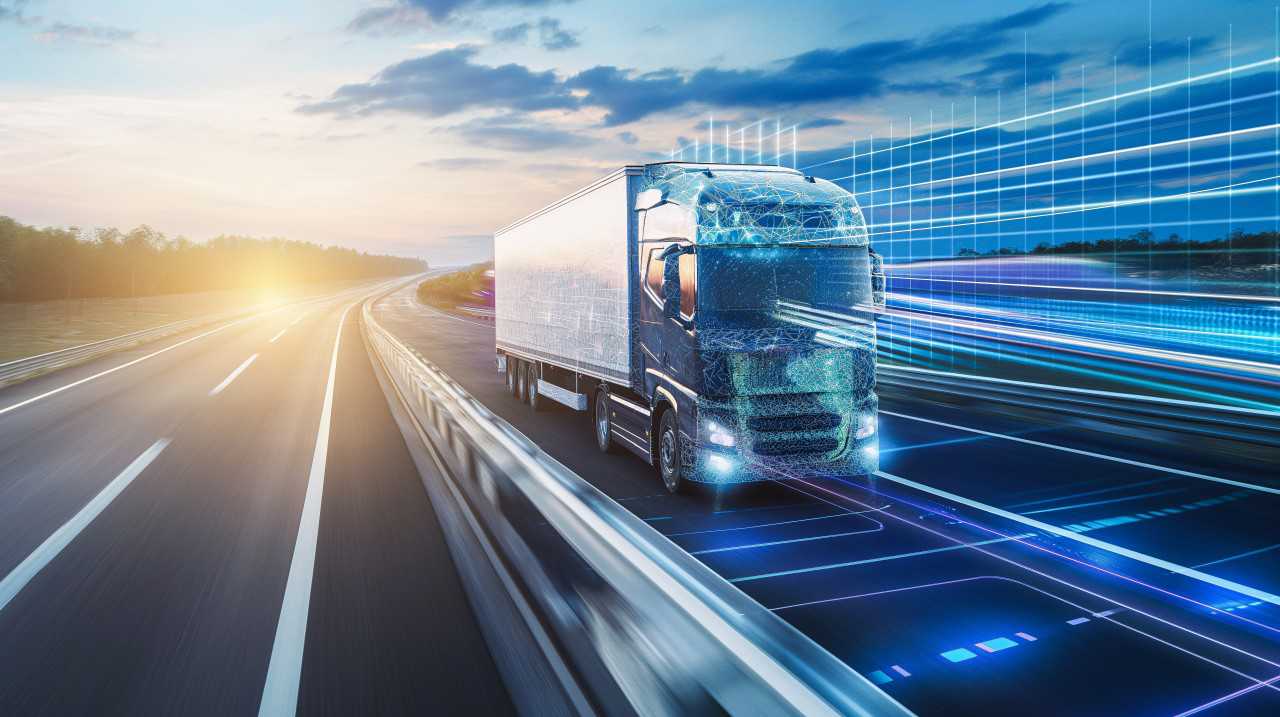
Susie Jones
ШІ та його вплив на сталий розвиток транспортної галузі
Створено: 29.08.2024
•
Оновлено: 29.08.2024
Штучний інтелект (ШІ) - це термін, який в останні роки став частиною сучасного лексикону. Через брак розуміння та хибні уявлення його часто сприймають негативно. Незважаючи на застереження, ШІ може позитивно впливати на сталий розвиток, робочі процеси та економіку. Оскільки на транспортну галузь припадає понад 25% викидів CO2, чи може штучний інтелект внести позитивні зміни для сталого майбутнього?
Що таке штучний інтелект?
Згідно з Oxford Languages, ШІ - це:
"теорія і розробка комп'ютерних систем, здатних виконувати завдання, що зазвичай вимагають людського інтелекту, такі як візуальне сприйняття, розпізнавання мови, прийняття рішень і переклад з однієї мови на іншу ".
Сталий розвиток транспортної галузі
Галузь перебуває на критичному перехресті зі зростаючим попитом і зміною типів доставки - онлайн-покупки є одним з найбільш швидкозростаючих попитів. Хоча збільшення попиту може принести користь галузі перевезень, вона стикається з екологічною дилемою, яка має життєво важливий вплив на планету.
Промисловість впливає на навколишнє середовище наступними способами:
Шумове забруднення: Велика кількість вантажівок може сприяти шумовому забрудненню. Шумове забруднення руйнує міські та сільські райони, часто впливаючи на добробут мешканців та дику природу. Вплив високого рівня шуму може призвести до стресу та серцево-судинних захворювань.
Викиди вуглецю: Традиційні види палива у вантажівках викидають CO2 в атмосферу. Із загального обсягу глобальних транспортних викидів 29% припадає на вантажний транспорт.
Якість повітря: Вантажівки викидають оксиди азоту та тверді частинки - і те, і інше погіршує якість повітря, шкодить довкіллю та призводить до респіраторних захворювань у людей.
Як штучний інтелект може підвищити стійкість
Планування маршрутів: Неадекватне планування маршрутів може коштувати автопаркам грошей, часу та ресурсів. Штучний інтелект може точно прогнозувати попит і потреби, рекомендуючи найбільш раціональний маршрут. Його алгоритми можуть аналізувати схеми руху, погодні умови та ефективність використання палива, щоб оптимізувати маршрути доставки. Цей процес економить гроші і сприяє скороченню викидів вуглекислого газу.
Прогнозування споживчого попиту: Продукція часто відвантажується споживачеві, але не є затребуваною, що призводить до марних витрат ресурсів і значного впливу на навколишнє середовище. Машинне навчання і прогнозний аналіз ШІ допоможуть виробникам прогнозувати попит, впорядковувати постачання та оптимізувати виробничі процеси. Завдяки значущому розумінню доставки та неотримання товарів, ШІ може інформувати логістичні компанії про те, які товари відправляти, вирішуючи екологічні проблеми від самого початку.
Моніторинг водія: Алгоритми ШІ аналізують поведінку водія, наприклад, перевищення швидкості, різке гальмування та роботу на холостому ходу. На основі цього ШІ може надавати рекомендації та стимули для більш економного водіння.
Скорочення енергоспоживання: ШІ може допомогти автотранспортним компаніям в управлінні енергоспоживанням по всьому ланцюжку поставок. Він може виявляти неефективні ділянки і пропонувати стратегії оптимізації, включаючи дані аналізу, отримані від розумних лічильників, датчиків та інших пристроїв, щоб визначити, що використовує занадто багато енергії.
Чи захопить ШІ логістичну галузь?
Хоча використання штучного інтелекту відіграватиме певну роль у логістичній галузі, малоймовірно, що він повністю її захопить. Алгоритми ШІ не можуть враховувати спонтанні події та винятки - тому участь людини все ще відіграватиме вирішальну роль. Кар'єрні можливості в галузі перевезень все ще будуть існувати, але виглядатимуть значно інакше.
Як ще промисловість може зменшити викиди вуглецю?
Промисловість може зробити наступне:
Транспортні засоби з низьким рівнем викидів: Електричні та гібридні вантажівки можуть зменшити викиди вуглецю. Обидва варіанти підходять для перевезень на короткі та довгі відстані.
Альтернативні види палива: З наближенням мети Net-Zero 2050 енергетичне законодавство схиляється в бік чистіших альтернатив. Гідроочищена рослинна олія (HVO) може негайно і значно скоротити викиди. [Certas Energy HVO] (https://certasenergy.co.uk/my-business/products/hvo/hvo-faq-fuel-guide/) стоїть за переходом на чистішу альтернативу, допомагаючи бізнесу досягти своїх цілей сталого розвитку та зробити значущі кроки на шляху до майбутнього з нульовим рівнем викидів. HVO надає наступні переваги:
Негайне скорочення до 90% викидів парникових газів у порівнянні зі стандартним дизельним паливом протягом усього життєвого циклу продукту.
Менше оксидів азоту, ніж у стандартному дизельному паливі
Менше твердих частинок, ніж у стандартному дизельному паливі
Легко біологічно розкладається
Тривалий термін зберігання до 10 років
Практично без слави
Перехід на альтернативне дизельне паливо - не потрібно модифікувати двигун або інфраструктуру.
Ефективність транспортного засобу: Економічні двигуни, скорочення часу простою та регулярне технічне обслуговування можуть підвищити ефективність.
Розумна упаковка: Виробники можуть використовувати біорозкладні та перероблені матеріали під час транспортування товарів - це зменшує кількість відходів та знижує витрати. Крім того, легша упаковка підвищує ефективність, що призводить до зниження викидів вуглецю.
Відновлювана енергія: Використання відновлюваних джерел енергії, таких як сонячна або вітрова енергія, в операціях може значно скоротити викиди вуглецю.
Скоротіть об'їзний пробіг: рахунок SNAP дозволяє менеджерам автопарків скоротити об'їзний пробіг - з більш ніж 600 партнерами по обслуговуванню, доступними для клієнтів рахунку SNAP, на вашому маршруті обов'язково знайдеться зупинка.



